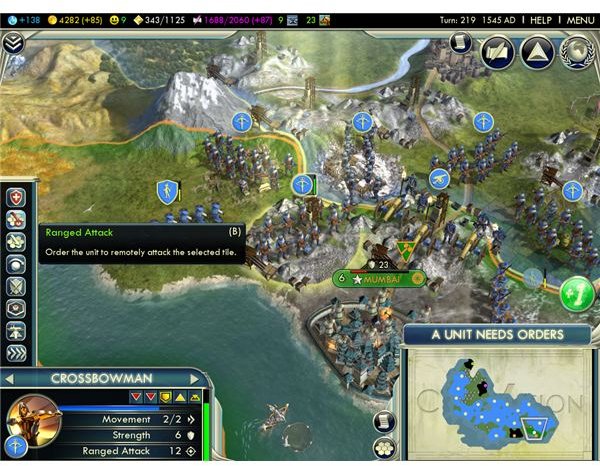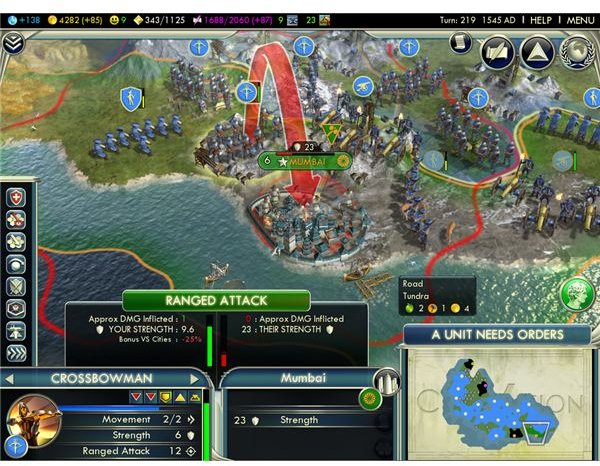Civilization 5 Ranged Attacks and Melee Attacks - Combat Strategies

Understanding Combat Types in Civilization 5
One of the key elements of survival and conquest in Civilization 5 is combat, using your own units to defend your territory from invaders and to attack neighbouring enemies.
Since its first release, combat has always been a key element of the game, offering something for wargamers to get their teeth into strategy-wise alongside the micro-management of landscape improvements, researching technology and managing economies and cities.
However with Civilization 5 a new dynamic was introduced to the game, with a hexagonal map grid replacing the traditional square grid, and bringing with it a change in how units move and by extension how military campaigns can be conducted. Understanding these changes can make all the difference to how you achieve a conquest victory.
Unit Movement and the Hexagonal Grid

Previous versions of Civilization featured a square grid. This made movement more two-dimensional, but also afforded the advantage of stacked units. Additionally it wasn’t possible to pass an enemy unit in an adjacent square.
With the hexagonal grid in Civilization 5, your units can be no longer be stacked and there is less difficulty passing adjacent units (as there are more exits points) however what this seemingly takes away in stack bonuses it delivers in flank bonuses.
What this means is that a 15% flank bonus is available to attacking units for each unit you have adjacent to your target. This pretty much means you need to gang up on opposing units to take advantage of this particular bonus.
Combat in Civilization 5: Hit Points
In order to have any success in a combat scenario in Civilization 5, you need to be aware of the concept of hit points. These are assigned to each unit and depend on the strength of the unit in question – a full-strength unit will have 10 hit points.
This is vital for understanding how your unit will react to being attacked or how strongly it will attack an opponent’s unit. While the game will display an on-screen graphic detailing how likely your unit is to survive, you should be aware of what hit points means to combat and how they influence the outcome.
Combat in Civilization 5: Ranged Attack
For ground units there are two different types of combat in Civilization 5: ranged attack and melee.

Melee combat occurs when any military unit that doesn’t have a ranged attack capability launches an attack on an enemy unit. The units will then engage in a melee combat, with the respective strengths of the units balanced against various defensive, landscape and other (perhaps unit-specific) bonuses that are used to calculate the outcome.
Meanwhile the ranged attack is also available, with suitable units (such as archery units, catapults and cannons, artillery, guided missiles, etc.) able to inflict damage on cities and enemy units 2 or more tiles away.
It is largely pointless attempting to wrest control of a city from an enemy civilization without a suitable ranged attack unit, unless you are prepared for many years of attrition (if this is the case, you should be considering pillaging your enemy’s resource tiles and cutting off any supply routes).
As with melee combat, ranged attack in Civilization 5 is based on hit points and is also a key aspect of city defence. Using the bombard function you can use your city to launch a ranged attack on incoming enemies, such as barbarians or invading neighbouring civilizations.
References
All references and screenshots from Civilization V
